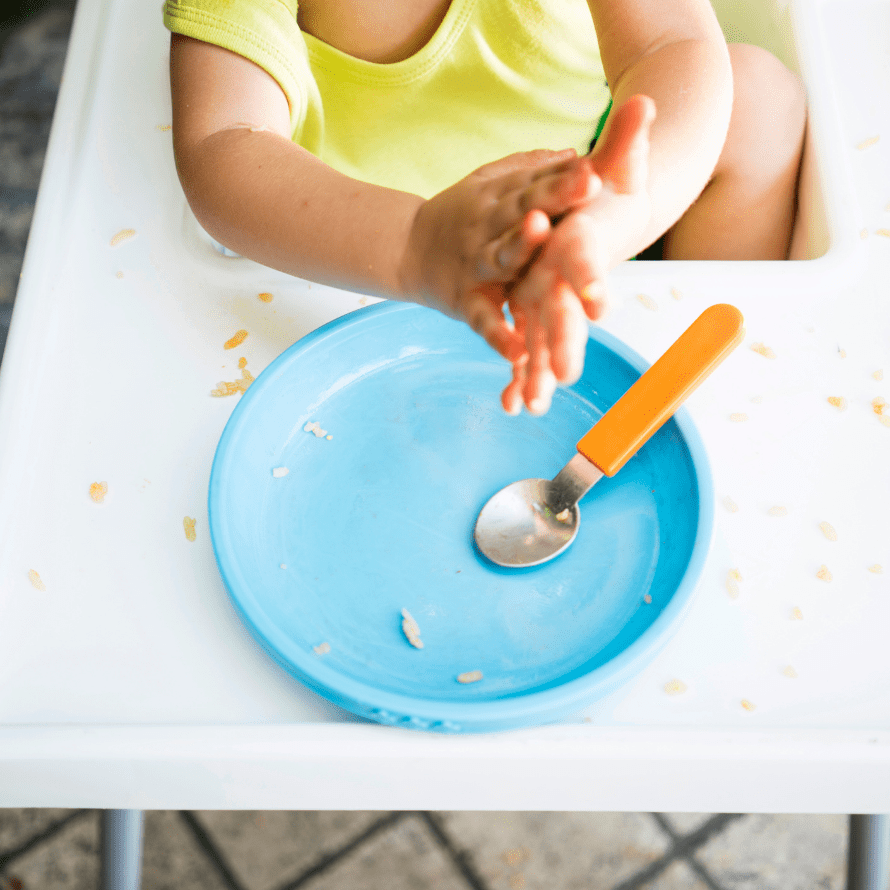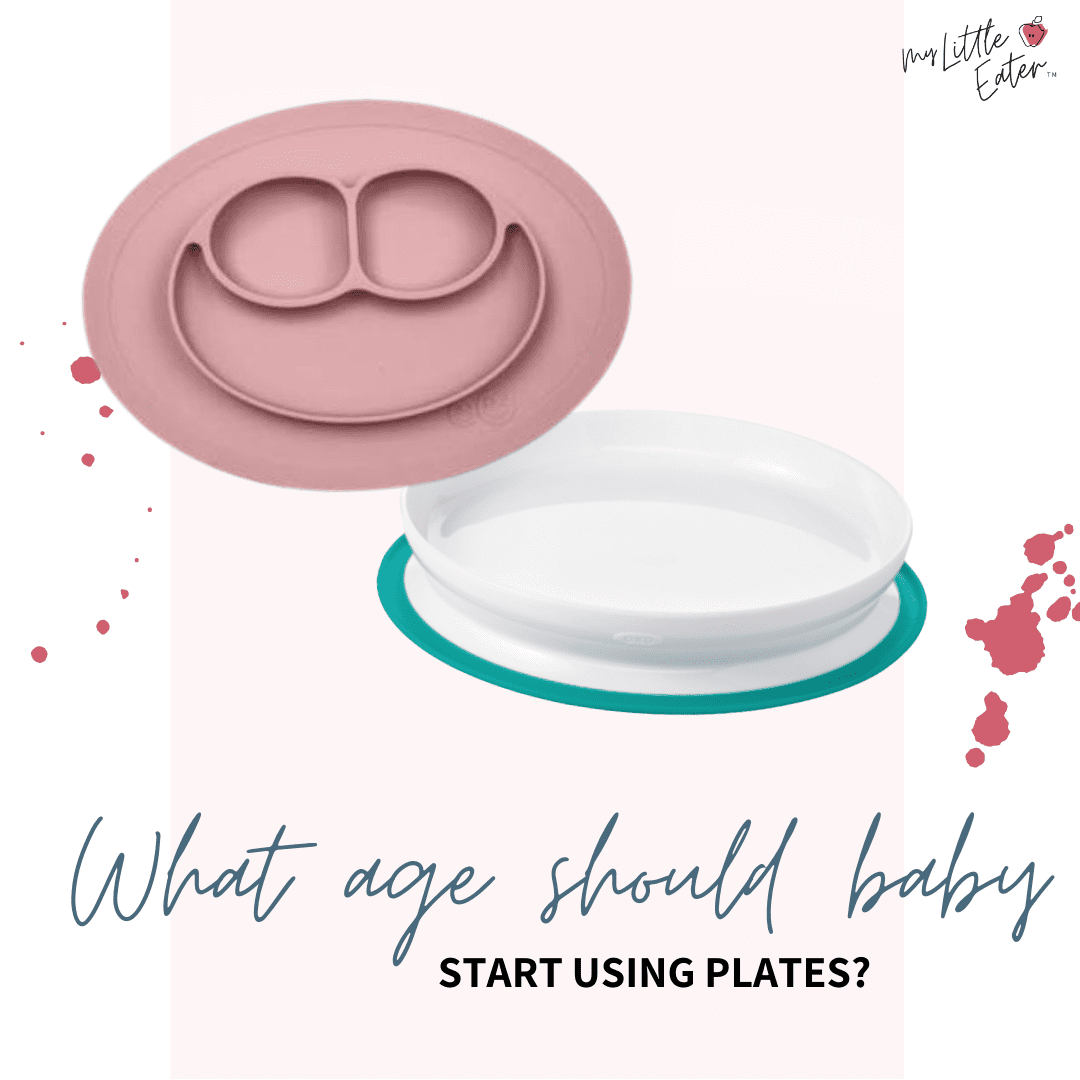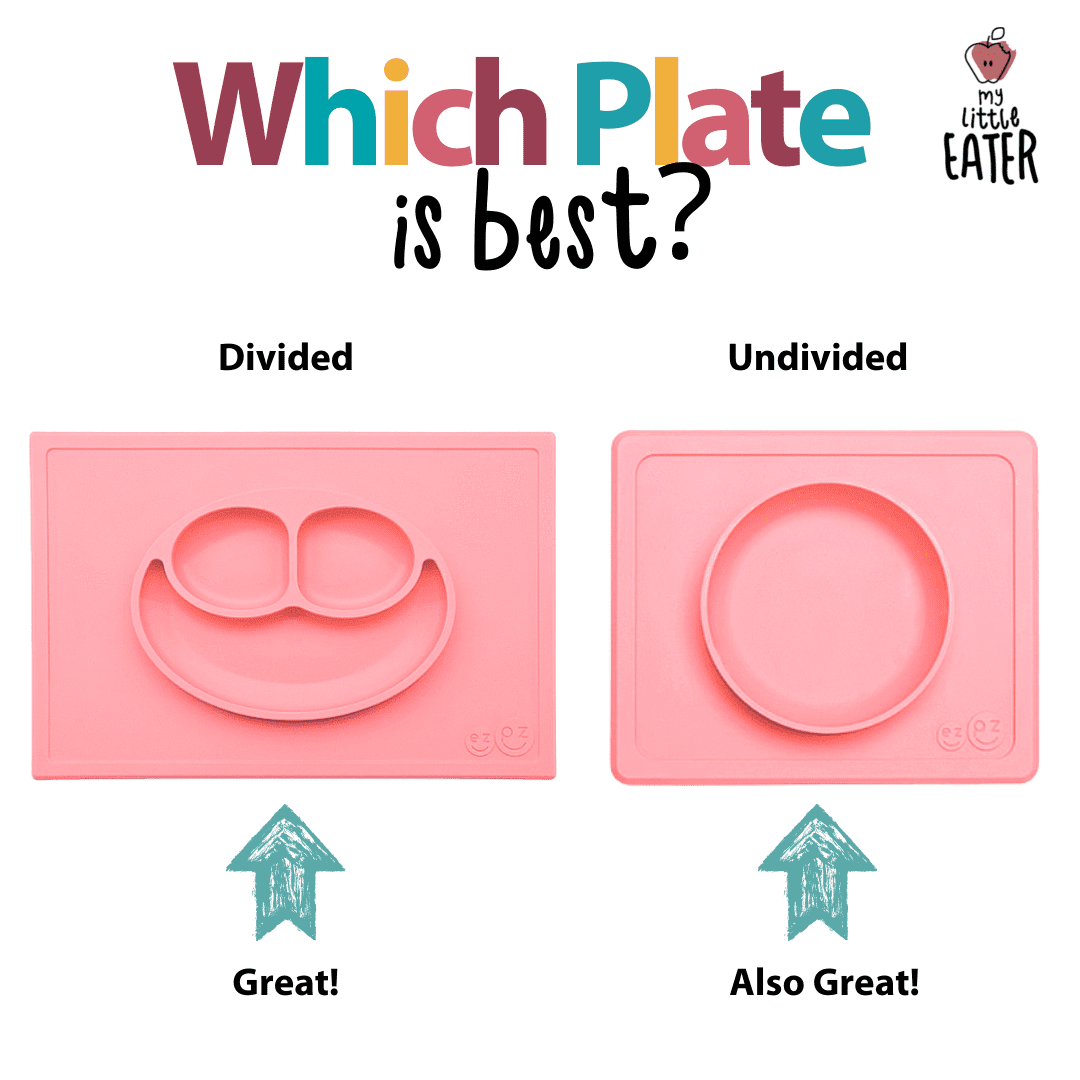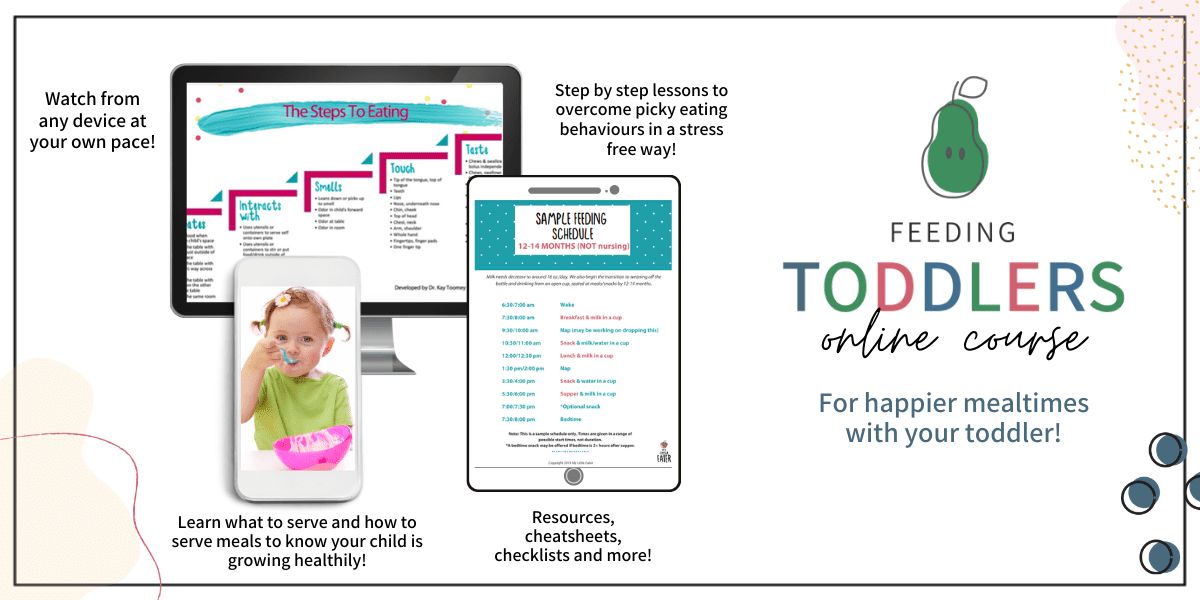
Shopping for anything for babies and toddlers can be extremely overwhelming…there’s always what seems like a hundred options, and everyone has a different favourite! Choosing what to try, especially as a first-time parent who hasn’t tested any of them yet, can be stressful. Which is why I’m always happy to share my recommendations – I’ve tested manyyyy plates and bowls, and so can easily let you know which ones I prefer. Again, each person will have different things that are most important to them, and so you have to go with what works best for you, but hopefully this will at least help you narrow it down!
So, I’m going to share with you what I look for in the plates I try out, when you can introduce a plate, and whether you really need to get one that suctions to the table/tray. And I’ll also answer the really popular question – divided or undivided, which is best? If you’d rather listen to this info while you’re on-the-go, download the podcast episode here (it’s a real quick one!).
What to look for when buying plates
When it comes to bowls and plates, I look for the following things:
- Easy to clean – I also prefer dishwasher safe, anything to make clean up a little bit easier!
- Durable – resist wear and tear, the longer they last the better (and they need to hold up to babies/toddlers!).
- Sustainable – meaning they’re good for the environment (or at least better than other options). Usually this means they’re silicone, stainless steel, or bamboo.
- Non-toxic material – no BPA, but I actually say to avoid plastics in general, if you can (AAP recommends avoiding use of plastics for anything that touches baby’s mouth/food).
- Age-appropriate.
When to introduce a plate to your baby
There’s no rule around this! There’s certainly no need to even use a plate in the beginning – you can just place food directly on a highchair tray and have your baby eat off of that. Or, perhaps you do want to plate their food because maybe it’s easier for your baby to pick up food out of a plate, or maybe you’re out and about and you want something clean to put your baby’s food on. Either way, do whatever works for you and your situation! Please don’t think that if you start one way, you can’t switch, you can even offer some meals with a plate and some meals without one. Switching it up like this does not confuse your baby! In fact, I like that you’re getting your baby used to different things at different times so they don’t freak out if one day their meal is served differently than they’re used to.
However, I will say that if your baby hasn’t been introduced to a plate at all by about 9 or 10 months of age, I’d suggest starting to incorporate it in. Do it before they hit that stage where we start to see more picky, or particular preferences begin to emerge, and we typically begin to see the first signs of this around 10 months.
I know that this is also the age where you might start to see some deliberate food (or in this case, plate throwing). Even though it may be becoming more prominent around this time, I still think that teaching them what to do instead is a better way to go, as opposed to avoiding plates all together. The fact is, that if they don’t throw the plate, they’ll throw their food, or a utensil, or whatever it is, so there’s no point in delaying using plates. Teaching your baby to keep their plate on the table or their highchair tray will always be my recommendation, and I like to say that you should get your babies used to eating the way you always want them to eat, early on. If you’re struggling with food or plate throwing, be sure to listen to my podcast episode on the topic for my step by step plan to tackle that!
My last tip as far as introducing them to variety, even in plates, early on is to switch up the colour or type of plate that you’re offering. I would make sure that you’ve started to do this as they approach 10 months of age. Again, getting them too used to the same thing can mean a major meltdown if one day, that green Sesame Street plate that they’re always used to seeing is replaced with a pink Peppa Pig plate. That’s just not gonna fly with a toddler, or soon-to-be-toddler, because they can definitely become stuck in their ways. So just like I say with food, get them used to variety and to things being different, or changed up, beginning early on.
Divided vs. undivided – what’s better?
This is a question that I often hear from concerned parents because they’re wondering whether using divided plates will “make” their child picky. The assumption here is that by giving them a divided plate, we’re creating picky tendencies in them because they’ll continue to want everything separated as they grow.
But, if you ask me…the plate you choose doesn’t make your child picky! There’s a myriad of other reasons for why that happens. 🙂 And if you’re a parent that’s stuck in this picky eating phase, then I definitely recommend my Feeding Toddlers online course because I teach a ton of strategies in there that can help – but please know that the type of plate offered, is not something that I’m concerned about!
The thing is, both of these types of plates have benefits that shouldn’t be downplayed.
Pros of Divided Plates:
When your baby is just starting out, divided plates can be a great option to help them visualize and recognize the different food on their plate. I personally like that they keep food items separated so your baby can see all the food items on the plate at once. Seeing it all laid out this way allows them to choose one food item at a time to explore and taste! Now, if they want to mix it up from there – trust me, they will!
Another benefit is that the walls of the divided plates are typically very high. This means that any of the compartments could also be used for purees, in addition to finger foods. The walls also help to make it easier for your baby to scoop the purees up and out of the plate. You’ll also probably be thankful for higher walls, and divided sections, when you serve dry food along with a more liquid-y food, because the wet food won’t spread everywhere and make a big mess right from the beginning. This gives your baby some time to do that all on their own 😉
Now, going back to considering whether divided plates make your child picky…honestly when you enter toddlerhood you’ll probably notice they have a tendency to be more picky about foods regardless of the plate being used. And a divided plate, if anything, might actually be a helpful tool you can use for a child who is already a very picky, or sensitive, eater! Sometimes disliked food can be overwhelming when mixed with other things on a plate, so keeping things in different compartments can make it easier for them to tolerate the disliked food being on their plate, which is a good exposure. In general, having the separate compartments can just feel less overwhelming to toddlers who are struggling with picky eating.
Pros of undivided plates:
You can use the fact that all of the food is together in one compartment to your advantage! I never actually used divided plates with my kids, and I never regretted it! They’ve never shown much of an issue with having their foods mixed up at all. In fact, I taught them to mix things up! I encouraged them to try out different combinations of foods to test them and see what they tasted like. And doing this really helped them to avoid having an aversion to mixed foods, so this really worked well for us.
At the end of the day, undivided plates and divided plates are both great! Why not switch it up?
Divided Plate Recommendations
I like the EzPz happy or mini mat for divided plates because I love that they come in two sizes. The smaller one fits perfectly on most high chair trays and is great for when you’re eating out at restaurants, or want to travel with your baby (it can fit right into the diaper bag!). And the larger size is more for when babies and toddlers are eating right at the table. EzPz also now has lids for the mats so you can cover the mat, which is perfect for travelling with food in the plates, or for easily packing up leftovers that you want to keep in the fridge.
Why you need suction plates!
But my biggest recommendation is to grab a bowl or plate that has suction! I love this option, and basically find it a necessity, especially for babies. The suction helps prevent the bowl/plate from moving around as your baby tries to eat, making things easier for them. But also, let’s face it, babies are going to be super messy, and will probably throw items off their highchair tray more than once (as I mentioned earlier too!). So, choose a plate with amazing suction to help minimize unnecessary mess by discouraging plate throwing.
My all-time favourite, hands down, is the OXO Tot Stick and Stay Plates – nothing compares! They have divided plates, bowls, and undivided. And honestly, even I can barely get it off the table/tray. You really have to dig your fingers under the suction until you get to that center part where it’s recessed – and this takes some skill! So while it’s not foolproof, it is more difficult, and I find it the best one compared to other suction plates I’ve tried.
If you’re looking for more recommendations for brands of plates and bowls that I like, and even other things like cups, utensils, and other tools for helping with picky eating, check out my Amazon shops (Canadian and American).








